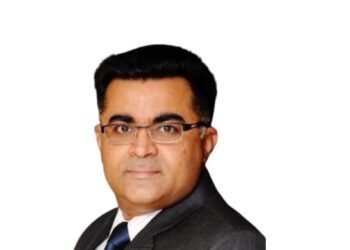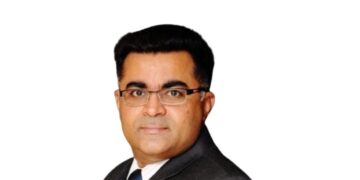Carrying over 7 billion passengers in FY 2025, Indian Railways ranks among the world’s busiest public transport networks. Working to ensure the safety and security of such massive footfall is a monumental challenge — one that India is now tackling with the help of AI-powered smart video. Taking this into consideration, the Railways Minister has announced CCTV cameras in over 11,000 coaches, with plans to cover 74,000 coaches and 15,000 locomotives.
Along with the integration of technologies such as video analytics and anomaly detection, India’s railway ecosystem is rapidly evolving, seeking to become smarter and safer through the adoption of AI-driven video technologies. Here are five trends that are redefining railway safety:
1. Massive scale, massive data
Surveillance video at this scale can generate massive amounts of data every month. Only one AI-enabled 4K camera at 24 fps, recording 24×7 with 90 days retention rate, for example, can produce up to 362 TB. With cities like Bhubaneswar now installing 1,500 additional AI cameras to enhance safety, it is evident that these local data pipelines might collapse without reliable high-capacity surveillance storage. Purpose-built hard disk drives designed for smart video can help ensure seamless recording across hundreds of streams simultaneously, minimizing dropped frames.
2. AI-driven intelligence needs reliable retention
For AI-powered video applications, high-definition detail and accuracy is critical. Achieving the best quality video requires upgrading surveillance cameras from 1080p to 4K or higher resolutions, often with multi-sensor feeds, to capture clearer details. In fact, higher resolution can increase storage needs sevenfold. Given that the global 4K video surveillance market is projected to grow to USD 45.8 billion by 2033 (CAGR ~13.8%), scalable, surveillance-optimised drives that keep AI insights fast and accurate are more important than ever.
3. Always-on surveillance demands always-on storage
Command centres can’t afford downtime or corrupted footage because even a few seconds of missing data can risk lives, compromise security, and hinder critical decision‑making in emergencies. Every frame matters while monitoring threats, responding to crises, or preserving evidence. Storage built for continuous high-write or sequential workloads can enable uninterrupted monitoring without frame drops, even under peak loads. For example, WD Purple® and WD Purple® Pro HDDs with AllFrame™ technology support up to 64 camera and 32 AI streams simultaneously, helping ensure smoother recording and playback across critical control rooms.
4. Compliance extends retention cycles
Safe City and Railway projects typically require 30–90 days of footage retention to meet regulatory norms, easily making storage demands triple. Scalable storage systems with HDDs like WD Purple® and WD Purple® Pro drives can help keep long-term costs sustainable while ensuring reliable retrieval of archives when needed.
5. Storage is the silent enabler of trust
Regulators and operators trust surveillance when footage is recorded reliably, remains intact, and is accessible when needed. Robust storage infrastructure can underpin this trust, enabling compliance, protecting data integrity, and ensuring operational continuity. As Delhi’s Safe City Project expands in scope, storage like WD Purple® and WD Purple® Pro drives with AllFrame™ technology can help ensure that critical video remains secure and smooth for AI analytics.
Building the backbone of smarter, safer cities
Storage is no longer a silent background component, it is a foundation of the AI-driven data economy. With smart video surveillance-optimised solutions, cities and railway networks can ensure reliable, high-resolution monitoring today while building the foundation for smarter urban spaces tomorrow. As India’s urban and transport landscape evolves, trusted storage infrastructure will likely remain at the core of enabling governance.
Also Read: India’s AI Playbook: How New Governance Guidelines Aim to Balance Innovation and Safety
(The author of this article, Owais Mohammed, Director of Sales for MEA and India at Western Digital, views expressed in this article are his own.)























